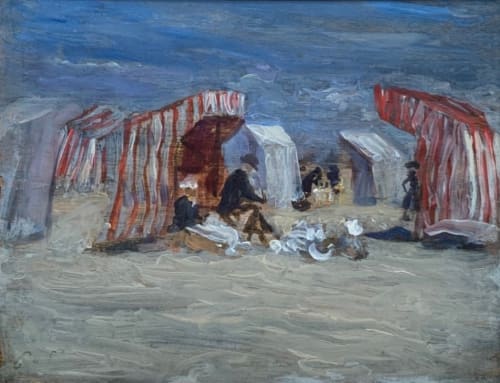Steer was at the forefront of British artists in his generation who looked to France for inspiration and thus he came to be known as an English Impressionist.Steer received a strong art foundation from his father, the portrait painter Philip Steer (1810-1871). From 1882-84 he trained in Paris, returning to France four times between 1887 and 1891. He was one of the founding members of the New English Art Club in 1886.
Around 1892, Steer was producing the beach scenes and seascapes that are regarded not only as his finest works, but also as the best Impressionist pictures painted by an Englishman.
His paintings play with the handling of light, and experiment with breaking up the colours, particularly in the series of summer holiday scenes painted on the East Coast, at Walberswick and Southwold in Suffolk. In the mid- to late-1890's his work turned more and more towards the conventional English styles of Turner and Constable. During World War I Steer was recruited by Lord Beaverbrook, the Minister of Information, to paint pictures of the Royal Navy.
In the 1920s he turned increasingly to watercolours. Steer taught at the Slade School from 1893 to 1930 and in 1931 was awarded the Order of Merit.

